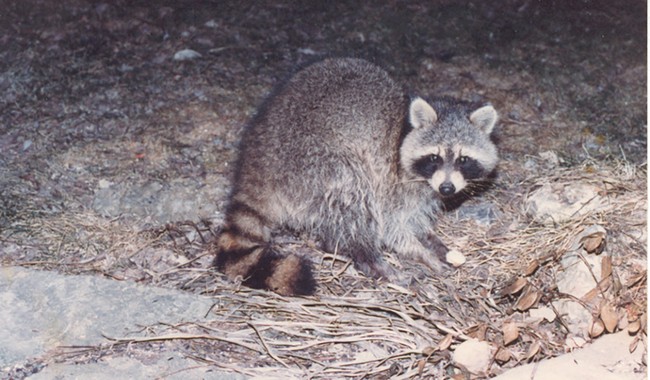
Introducing a smart, adaptable, dexterous, and audacious critter into an environment where they have no natural predators can cause all kinds of problems. Australia learned this with rabbits, and now Japan is learning the lesson with raccoons:
Japan’s raccoon infestation has gotten considerably worse over the last decade, multiple Japanese news sources are reporting.
Nearly 1,300 raccoons were captured during the 2022 fiscal year, said Tokyo’s government.
This is about five times the number that were captured 10 years ago, reported Kyodo News, a Japanese news agency.
In 2013, the Japanese government reiterated the need to combat raccoons as an invasive species.
Raccoons are not native to Japan, but were brought to the country in the 1970s following the popularity of the 1977 anime “Rascal the Raccoon.”
Honestly, one of the worst things that can happen to any critter is to become a media sensation. Once upon a time, the American Cocker Spaniel was a quick, bright, hardy little bird dog—big enough to handle quail and grouse, but small enough to keep in an apartment or small house. Then Disney released a certain movie that involved a cocker spaniel in a romance with a raffish, gray-furred mutt, and next thing you know, the American Cocker was overbred into a flea-brained, google-eyed, globe-headed monstrosity.
Now Japan is dealing with the aftermath of a trend in pets thanks to an anime:
The anime was based on the autobiographical novel “Rascal, A Memoir of a Better Era” by Sterling North. In the book, North recounts raising a baby raccoon, Rascal.
In response to the show, people in Japan began importing raccoons to keep as pets.
At its peak, more than 1,500 raccoons were being imported to Japan each year, said Smithsonian Magazine.
But while the Japanese government moved quickly to ban both the import of raccoons, and the practice of keeping them as pets, it was too little, too late.
And of all the animals an island nation could have trouble with, raccoons have to be one of the worst. Their habits and habitats overlap with the iconic Japanese takuni, and in some places, they are pushing the tanuki out.
See Related: Massachusetts: Bear Drags Car Crash Victim’s Body Into Woods
Not Satire: There’s a Missing Emotional Support Alligator
I grew up around raccoons. When I was a teenager running my trapline in winter, raccoons were one of the toughest critters to catch, second only to foxes. They are smart, their front paws are almost like hands, they can eat anything, live almost anywhere, do very well near human habitations, and are extremely adaptable. One would think that the Japanese authorities would be able to deal with their infestation, but on the coon-trary, the masked trash pandas are perfectly capable of breeding faster than they can be caught. They also have an innate sense to find their way around; biologists call it GPS, or Garbage Pickup Sense. There can be no negotiating with them, either, as the critters are notoriously difficult to reach a coon-cord with.
They don’t even make good pets. They can open cabinets and drawers, they are insatiably curious, and can be aggressive – they are basically little, four-legged velociraptors.
Japan serves as a good object lesson: Leave wild critters where they normally live.
Related at RedState: Rock ‘n’ Roll Isn’t Just American – A Look at Japanese Rock, Nightlife, and Culture